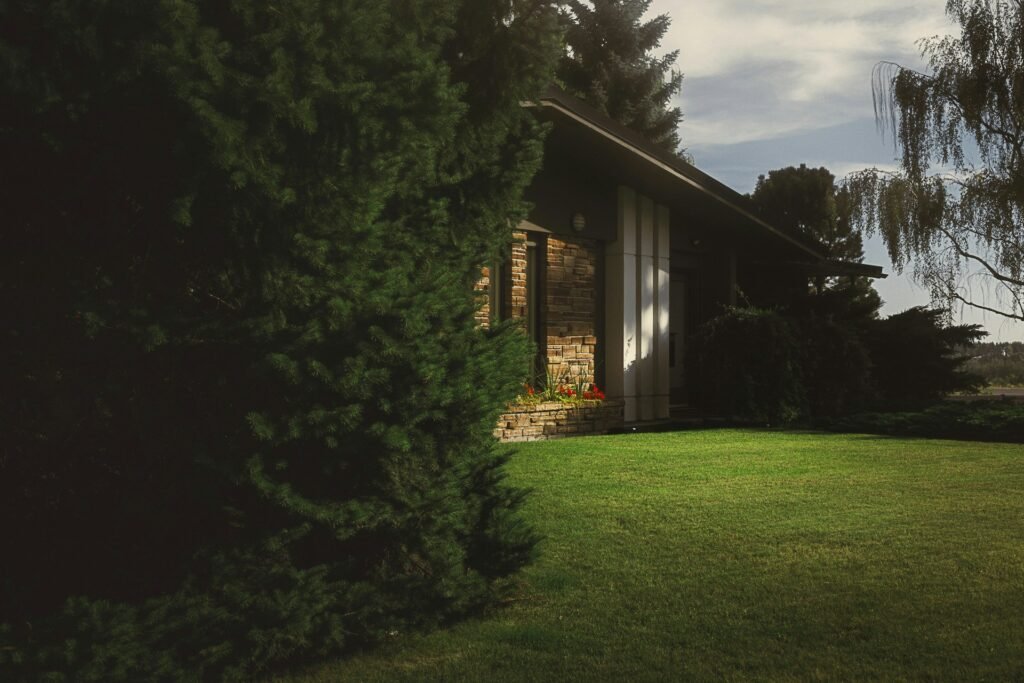Photo by Devon MacKay
Artificial grass might have promised a carefree lawn, but many homeowners are rediscovering the joys of a real, living green space. Whether you’re tired of the synthetic look and feel, concerned about environmental impact, or simply yearning for the lushness of natural turf, the desire to transition back is understandable.
In this guide, we at Lazy Lawn will outline some of the key steps involved in swapping your artificial turf for a vibrant, healthy lawn.
1. Removal and Preparation
Excavation
Carefully remove the artificial turf and any underlying layers, such as weed barrier fabric or compacted gravel. This can be physically demanding, so consider renting appropriate equipment or hiring professionals.
Soil Assessment
Once the artificial turf is gone, assess the existing soil. Determine its composition, drainage capabilities, and nutrient levels. Poor soil quality will hinder grass growth, so amending it is crucial.
Soil Improvement
If necessary, amend the soil to improve its structure and fertility. This may involve adding compost, organic matter, or sand to improve drainage. Consider a soil test to pinpoint specific deficiencies and address them accordingly.
2. Choosing the Right Grass
Selecting the appropriate grass is as vital as choosing trees for your landscape. As landscapers like Edwards Tree Service and Snow Removal may tell you, certain factors are a must for a vibrant lawn:
Climate
Choose a grass variety that thrives in your local climate. Some grasses are better suited to heat and drought, while others prefer cooler temperatures and more moisture.
Sunlight
Determine the amount of sunlight your lawn receives. Some grasses require full sun, while others tolerate shade.
Foot Traffic
If your lawn experiences heavy foot traffic, choose a durable, wear-resistant grass variety.
Maintenance
Consider your desired level of maintenance. Some grasses require more frequent mowing and watering than others.
3. Establishing Your New Lawn
Seeding:
- Prepare the seedbed by raking the soil to create a fine, level surface.
- Broadcast grass seed evenly according to package instructions.
- Gently rake the seed into the soil.
- Lightly water the seeded area to ensure good seed-to-soil contact.
Sodding:
- Sodding offers faster results.
- Ensure the sod is fresh and free of weeds.
- Lay sod in a staggered pattern, like bricks, to avoid seams.
- Water the sod thoroughly after installation.
4. Post-Installation Care
Watering
Consistent watering is vital when establishing a new lawn. When installing your sprinkler system, consult a Toronto sprinkler company to find methods of making your sprinklers that much more water-efficient. What you can do yourself is to water the lawn deeply and infrequently to stimulate deep root growth. It also pays to refrain from overwatering to avoid causing root rot.
Mowing
Once the grass reaches a height of 7-10 centimetres, begin mowing regularly, removing no more than one-third of the grass blade at a time.
Fertilizing
Fertilize your lawn according to the specific needs of your chosen grass variety. Avoid over-fertilizing, which can harm the environment and lead to excessive growth.
Weed Control
Regularly monitor your lawn for weeds and address them promptly. Hand-pulling or using a selective herbicide can effectively control weeds.
Pest and Disease Avoidance
Conduct regular inspections of the lawn for signs of pests or diseases. Take appropriate action to address any issues promptly.
5. Patience and Persistence
Establishing a healthy lawn takes time and patience. Be prepared to address challenges that may arise, such as weeds, pests, and drought. Consistent care and attention will reward you with a beautiful, natural lawn that you can enjoy for years to come.
Environmental Considerations
One last thing to consider before enjoying your new lawn is the impact it will have on the environment. A little extra effort on your part can go a long way toward minimizing any effects on your local environment, and possibly save you on costs. Some of those eco-friendly tips to remember include:
Reduce water usage
Choose drought-tolerant grass varieties and implement water-saving irrigation practices.
Minimize fertilizer use
Opt for organic fertilizers and avoid over-fertilizing.
Avoid pesticides
Explore natural pest and disease control methods whenever possible.
Recycle or compost
Recycle or compost any removed artificial turf materials whenever possible.
—
By carefully planning and executing the transition, you can successfully replace your artificial turf with a vibrant, eco-friendly real lawn. Remember to choose the right grass for your specific needs, prepare the soil properly, and provide consistent care. With a little effort and patience, you’ll soon be enjoying the beauty and benefits of a natural lawn in your own home.






